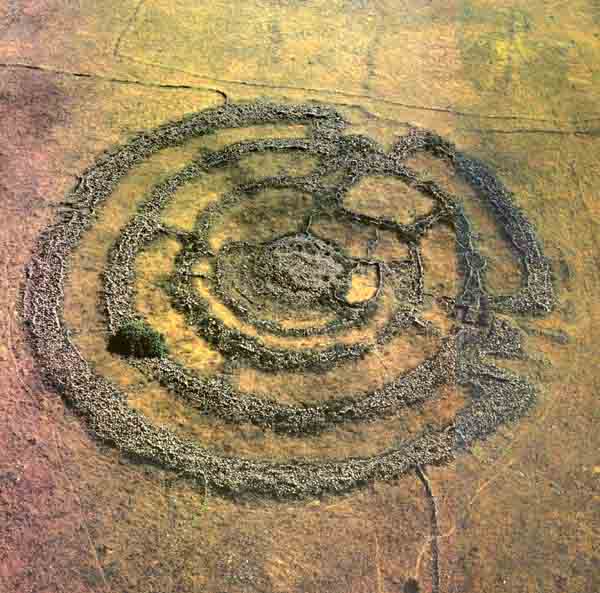Image Details

Duby Tal and Moni Haramati, courtesy Masa Archer magazine, Tel Aviv
The structure’s original purpose has eluded archaeologists who have variously proposed that it was for ceremonies, defense, storage, burials, astronomy—or even the tomb of Og, the giant king of Bashan (Numbers 21:33–35). Author Yonathan Mizrachi suggests that the concentric circles’ first use was in about 3000 B.C.E., a date based on fragmentary ceramic remains and construction techniques. He proposes that the circles were a device to mark the June solstice when the sun rose on a line through the center of the northeast entrance. Later, in the late second millennium B.C.E., the central cairn was constructed as a burial site. A large fig tree has grown over wall 2 (lower left).
